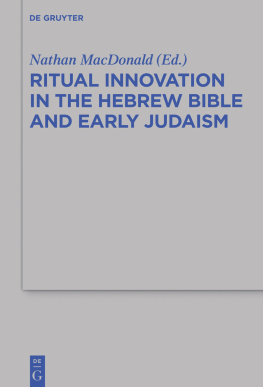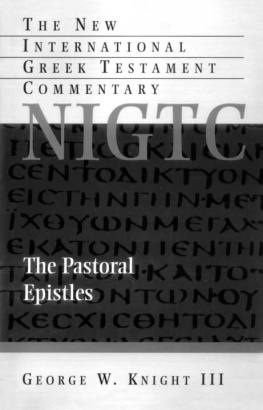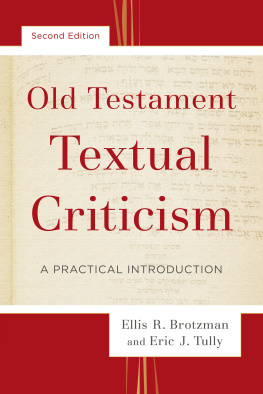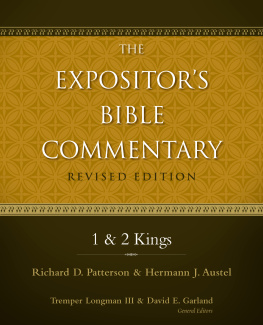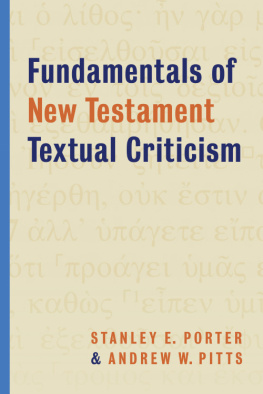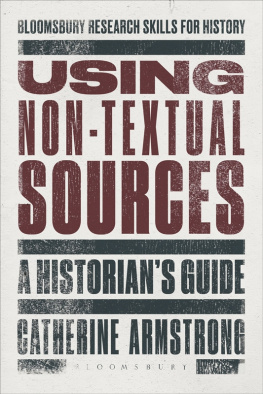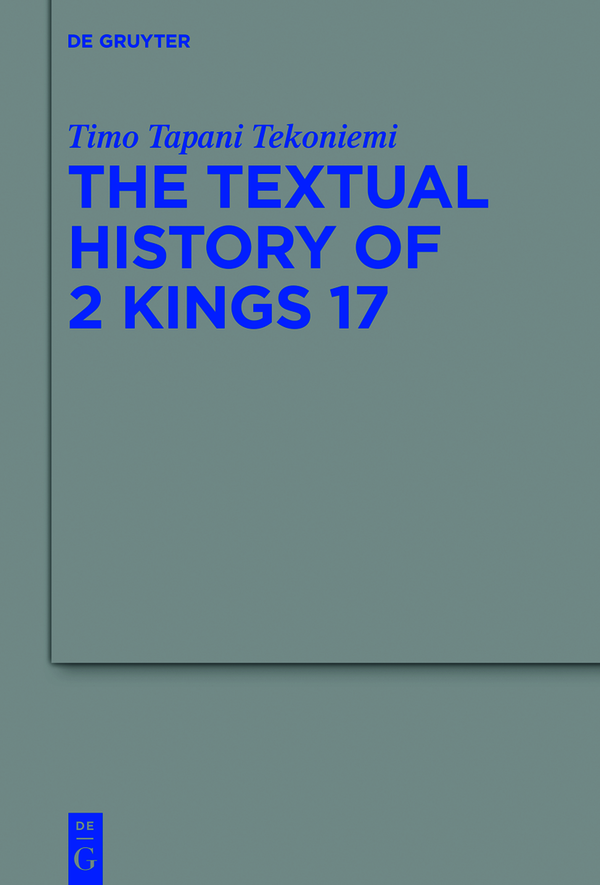Reinhard G. Kratz
The Deutsche Nationalbibliothek lists this publication in the Deutsche Nationalbibliografie; detailed bibliographic data are available on the Internet at http://dnb.dnb.de.
1.1 The outline and aims of this study
This study will examine in detail the textual history of 2 Kings 17 both in light of the preserved textual evidence (documented evidence) and in light of the literary-critical method (undocumented evidence). After the Introduction, in section 2, I will analyze the often widely differing textual witnesses in verses 123, and aim to find and reconstruct the oldest text attainable. In this section the text-critical comparison of different Septuagint witnesses (and especially the Old Latin witness Palimpsestus Vindobonensis) with each other and with the text of the After this, in section 3, I will delve deeper into the undocumented textual history of verses 723 (the editorial prehistory of these verses) from the viewpoint of both the MT and OG edition. A synthesis of the insights of the two editions will be given. In section 4, the textual history of verses 2441 will be examined. While the different textual witnesses will also be analyzed here, the argumentation will be mainly literary critical since major textual differences between the main witnesses greatly decrease in the second half of the chapter. Despite this there are nevertheless certain readings in the Septuagint that need to be heeded in the text-historical study of these verses. At the end of the study a discussion on the Conclusions and their Methodological Repercussions will be provided, together with three Appendices.
The research question of this study may be posed as follows: How has 2 Kings 17 been edited through its long transmission process, both in the light of the documented (textual) evidence, and the literary-redactional models, and can some textual stratum be posited through this study of different text forms as the earliest textual layer on top of which the later textual growth (via continuous Fortschreibung) took place? The study of the text will thus be in general conducted through two interrelated phases, i.e., text critical and literary critical, as further explicated under the next heading, Methodological considerations.
This study of the textual history of 2Kgs17 is important because no such systematical study that takes into account all the documented evidence has yet been conducted on the chapter. Moreover, especially in historical books such as Kings, the text-historical study has the potential to also enlighten the scholarship concerning the historiographical issues of the text. Most different theories concerning the destruction and exile of the Northern Kingdom are based on this chapter (especially verses 16 and 2430). However, these theories are usually based only on the Masoretic form of the text, and therefore it is necessary to assess whether there are any text-critically important readings in these verses. It is argued that through the study of the textual material we are able to find more clues concerning the historical situation and that, on the other hand, we have to abandon some former clues that become too doubtful through this inquiry.
1.2 Methodological considerations
1.2.1 In the search for documented evidence
Chapter 2 Kings 17 contains significant literary-/redaction-critical (Literarkritik) problems that have seen numerous proposed solutions in modern research. Nevertheless, most of this research does not make use of textual criticism and the evidence of other textual witnesses. Even some, if not most, of the most influential literary-critical and redaction-critical theories concerning the textual evolution of Kings have been proposed solely on the basis of the Masoretic text (MT). There are, however, serious questions to be raised about this approach when investigating these often highly problematic texts and their witnesses.
The biggest reason to doubt such an approach is the re-emergence
The methodological problems or possibilities do not end here, however. The need for a new evaluation of the textual evidence also has its impact on the redaction-critical theories of Kings. If it can be shown, for example, that, at least in some passages, the The establishment of the most ancient text is thereby not only a purely theoretical matter of textual preferentiality, but it also has much more far-reaching consequences.
Indeed, with the re-emergence of the appreciation of text-critical evidence it has also become clear that the classic redactional model that assumes overarching redactional strata that encompass entire books may no longer be sustainable as such;
This is, of course, not to say that the classic idea of overarching redactions is wrong per se. Vast reforming and rewriting of the text may have (and likely even must have) still taken place, especially during the so-called paradigm shifts when the text had to be substantially changed due to contemporary events, such as the exile to Babylon. This challenge now has to be taken seriously.
While taking heed of textual evidence may therefore shake some methods or theories, it can also be used to support others. Some literary-critical findings and theories highlighting the stratified nature of the texts have often been criticized (and rightfully so) for their overly hypothetical nature. While it has often been argued that the higher literary and lower textual criticisms should be kept apart,
Therefore, when we find notable differences between witnesses, the first question to be posed should be whether or not the difference can be explained by an accidental textual process (copying mistake, etc.). If there are no clear signs of an accidental change, we may proceed to take note of the possible literary ramifications of this difference: does the difference change the logic of the narrative, for instance? Oftentimes this is indeed the case: a challenging narrative logic is simply eased by a correction. The case is even clearer if the portrayed ideology/theology or function of the narrative changes with the difference: we are probably dealing with a literary variant,
Oftentimes, of course, the cases are not this straightforward since many differences between the texts can usually be argued to have happened either via accidental omission or deliberate addition. To give just one (but highly relevant) example, the editorial technique of Wiederaufnahme (also known as resumptive repetition or reprise),
One more methodological notion rising from these remarks of textual and literary criticism converging concerns plurality, albeit not of a textual sort, but rather the plurality of tenable conclusions, particularly when talking about the redactional end results. There is of course nothing new about redaction critics coming to (completely) differing conclusions with each other. However, now that the literary-textual sphere of arguments (which are, furthermore, at times more or less reversible) has to be taken into account as well, the redactional work will also inevitably be affected. One of the best examples discussed in this study is the case of 2Kgs17:2, a text usually deemed to come from the earliest (DtrH) layer(s) in Kings. Since the ideologies and possibly even the theologies of this verse are completely opposite to each other in the MT and OG editions (and the arguments for either reading are, for the most part, reversible), and since the ideology of this verse may have its bearing on the further evaluation of the redactional strata in 2Kgs17, a responsible redaction critic would admit that there are seemingly at least two potential and, possibly, even



